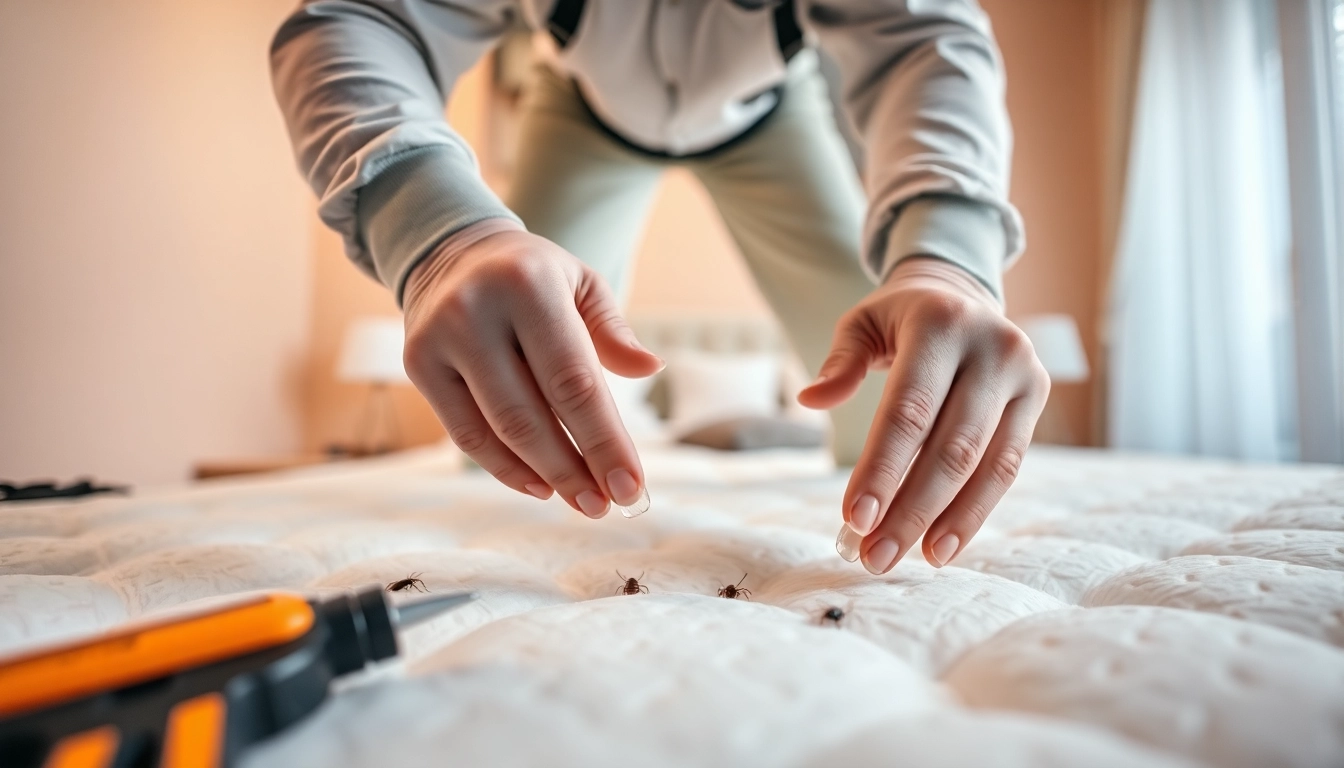Understanding Bed Bugs and Their Behavior
Identification of Bed Bugs
Bed bugs (Cimex lectularius) are small, brownish insects that feed on the blood of humans and animals. Adult bed bugs are about the size of an apple seed, roughly 5-7 mm long. They possess flat bodies which allow them to hide in small crevices, especially during the day. Their coloration can range from yellow-brown to reddish-brown, depending on how recently they have fed. Identifying bed bugs is crucial in the early stages of an infestation, and they can often be found in seams of mattresses, bed frames, furniture, and even along edges of carpets.
Life Cycle of Bed Bugs
The life cycle of a bed bug consists of five nymphal stages and one adult stage. Bed bugs undergo incomplete metamorphosis, meaning they develop through various molts but do not go through a pupal stage. After hatching from eggs, which are typically laid in clusters of 10-50, nymphs undergo a series of molts, which requires feeding on blood to mature. A complete life cycle can take as little as 5 weeks to over 4 months, depending on environmental conditions such as temperature and availability of food. Understanding this cycle is crucial for effective bed bug removal techniques.
Common Hiding Spots
Bed bugs are notorious for their ability to hide in various locations. Common hiding spots include:
- Mattresses and Box Springs: Bed bugs often nestle in the seams and folds of mattresses and box springs.
- Furniture Crevices: Chairs, couches, and any upholstered furniture can harbor bed bugs in their crevices.
- Baseboards and Walls: Cracks in walls, behind baseboards, and even in electrical outlets are frequent hiding places.
- Luggage and Personal Items: Bed bugs can easily hitch a ride in your luggage, making it vital to check upon returning from trips.
Signs of a Bed Bug Infestation
Recognizing Bed Bug Bites
Bed bug bites are often one of the first signs of an infestation. The bites usually appear as small, red welts and often occur in clusters or lines, as the bugs bite multiple times during a single feeding. It is important to note that not everyone reacts to bed bug bites, which can lead to an undetected infestation. Typically, bites cause itchiness and discomfort, and in some cases, allergic reactions may require medical attention.
Visual Indicators in Your Home
Besides bites, other visual indicators of an infestation include:
- Rusty or Reddish Stains: These stains on sheets or mattresses are from crushed bed bugs.
- Bed Bug Eggs and Shells: Eggs are tiny, white, and sticky, roughly the size of a pinhead, while molted shells can be found in or around infested areas.
- Unpleasant Odor: An infestation may produce a musty odor, similar to that of spoiled raspberries, caused by pheromones emitted by bed bugs.
Using Dogs for Detection
Dogs trained to detect bed bugs can be a highly effective tool in confirming an infestation. Canine detection teams have a remarkable ability to locate bed bugs through their keen sense of smell. A well-trained detection dog can quickly assess an area, giving you peace of mind and helping to confirm whether you indeed have a problem.
DIY Bed Bug Removal Techniques
Heat Treatment Methods
One of the most effective DIY methods of bed bug removal is heat treatment. Bed bugs cannot survive at temperatures above 120°F (49°C). To implement this method:
- Wash all bedding, clothing, and fabrics in hot water, followed by a hot dry cycle.
- Use a steam cleaner on mattresses, furniture, and any infested areas.
- Consider using portable heating devices to raise the temperature in localized areas.
Heating your home to the necessary temperatures can be a challenge but can be effective if done properly.
Chemical Solutions for Bed Bug Removal
While chemical treatments require careful handling and understanding of safety protocols, they can also be effective, particularly in a more severe infestation. Common chemicals include:
- Pesticides: Products containing active ingredients like pyrethroids can be used in hotspots. Always follow label instructions.
- Diatomaceous Earth: This natural powder desiccates bed bugs and can be applied on mattress seams and corners.
It is crucial to remember that chemicals should be used sparingly and responsibly, considering both efficacy and environmental health.
Cleaning and Prevention Strategies
Beyond treatments, a comprehensive cleaning and prevention strategy is essential for bed bug management. Practical steps include:
- Regular Vacuuming: Vacuuming can help remove bed bugs and their eggs. Ensure to dispose of the vacuum bag outside immediately.
- Minimize Clutter: Keeping areas free of clutter makes it easier to detect and treat bed bugs.
- Encasements: Use encasements for mattresses and pillows to trap any existing bed bugs and prevent new infestations.
Professional Bed Bug Removal Services
Choosing the Right Exterminator
When hiring a professional for bed bug removal, it is critical to choose someone with expertise and a solid reputation. Look for exterminators who:
- Use integrated pest management (IPM) approaches that combine multiple strategies.
- Provide clear treatment plans and warranty options post-treatment.
- Are certified and licensed, assuring you that professionals handle your situation.
Check reviews and ask for referrals to ensure the service is reliable and effective.
What to Expect During Treatment
Most professional bed bug treatments will involve a detailed inspection followed by treatment using either heat or chemical applications. Here’s what you can generally expect:
- A thorough inspection of infested and surrounding areas.
- Application of chosen treatment methods, which may take several hours.
- Follow-up inspections and treatments as necessary, along with recommendations for ongoing monitoring.
Be prepared for some additional preparation required in your home, such as removing clutter, washing bedding, or clearing furniture away from walls.
Long-term Management Solutions
Long-term management is crucial in ensuring bed bugs do not return after treatment. Preventive steps can include:
- Ongoing inspections and monitoring techniques.
- Reinforcing preventive measures learned during treatment.
- Staying educated on bed bug behavior and prevention to catch any potential re-infestations early.
Cost of Bed Bug Removal
Factors Influencing Treatment Costs
Cost for bed bug removal can vary widely based on several factors, including:
- Severity of Infestation: More severe infestations require more intensive treatment.
- Type of Treatment: Heat treatments tend to be more expensive than chemical treatments, but they may be more effective in the long run.
- Size of the Area: Larger complexes or homes will naturally incur greater costs.
Comparing DIY vs. Professional Costs
Home remedies typically seem less expensive initially; however, they may not always provide a permanent solution. Professionals have access to advanced techniques and specialized equipment that ensure complete eradication of pests. A DIY approach may range from $100-$300 in supplies, while hiring a professional can range from $300-$1,500 or more depending on the scope of the issue. It is essential to weigh these costs against the potential discomfort and health risks associated with continuing an infestation.
Insurance and Coverage Options
Some homeowners insurance policies may cover bed bug treatment, but many do not, so it’s essential to review your policy. Ask your insurance provider what is included under your coverage to avoid unexpected out-of-pocket costs. Additionally, some pest control companies may offer financing options or payment plans to help manage costs.



